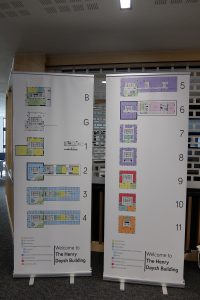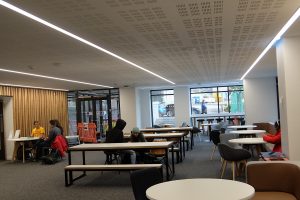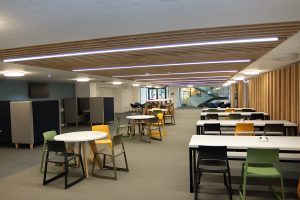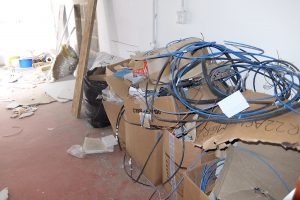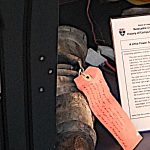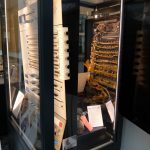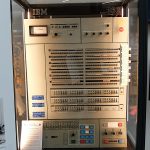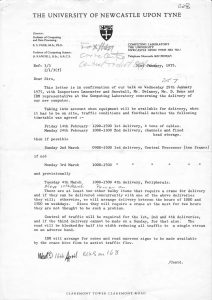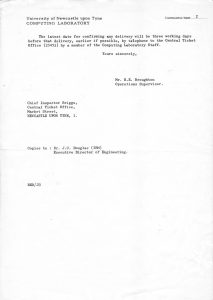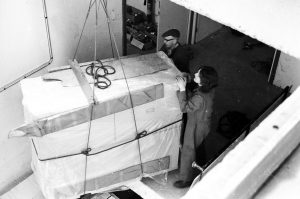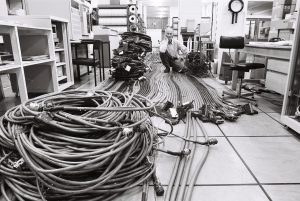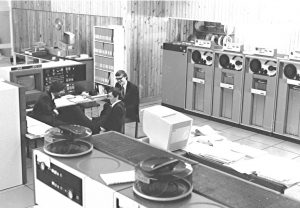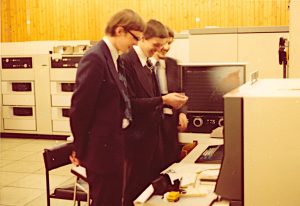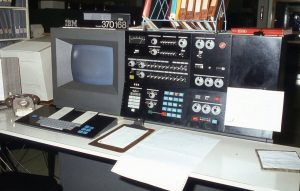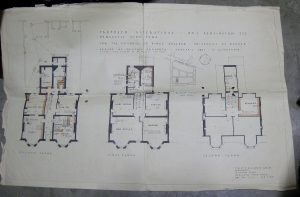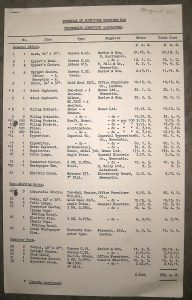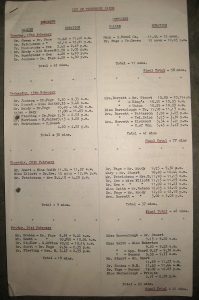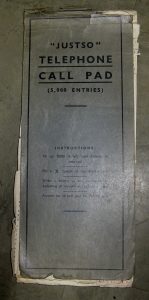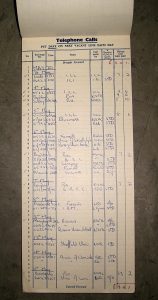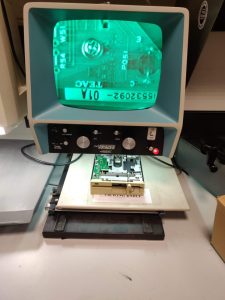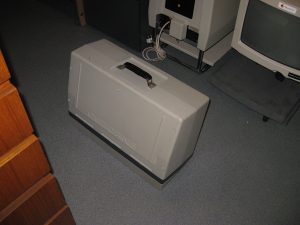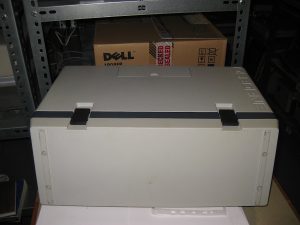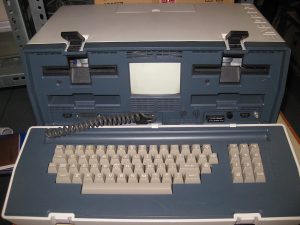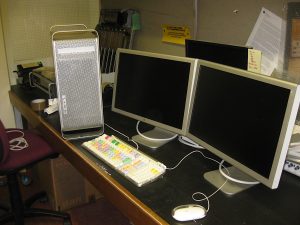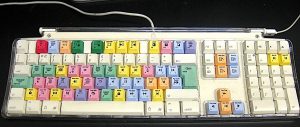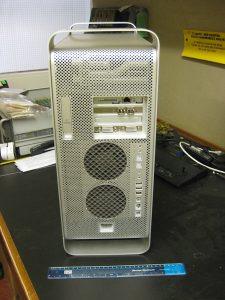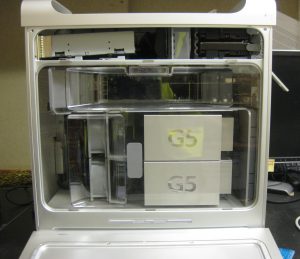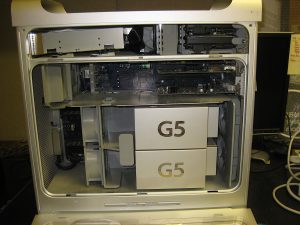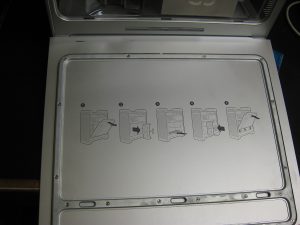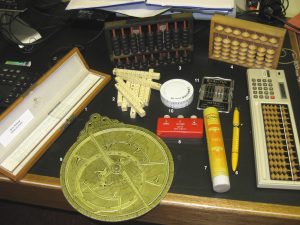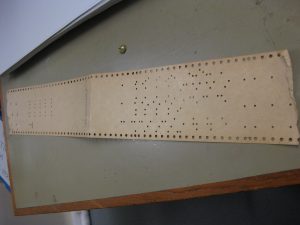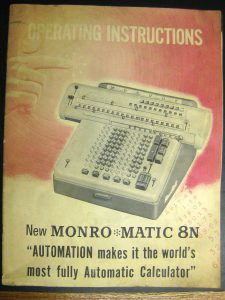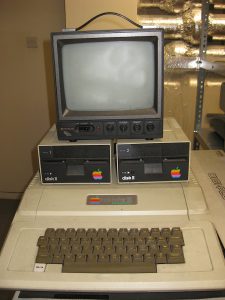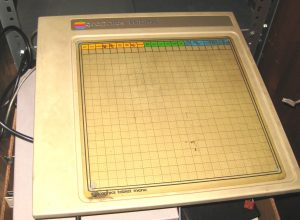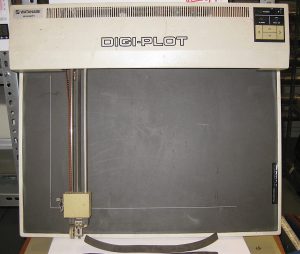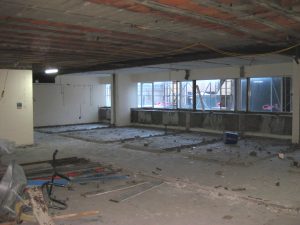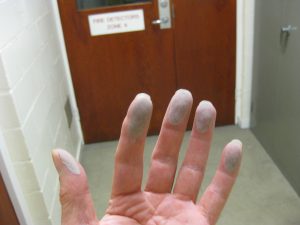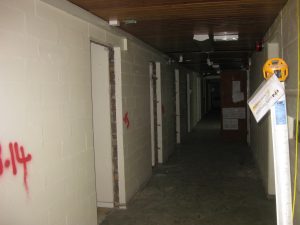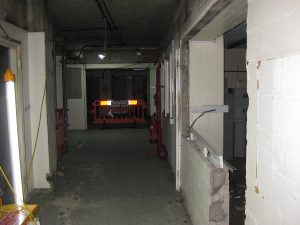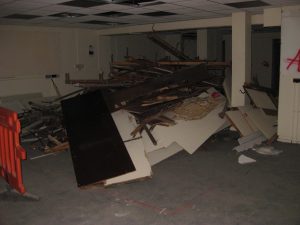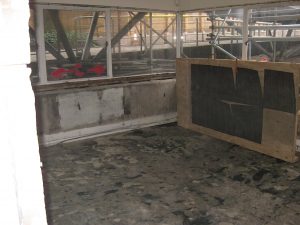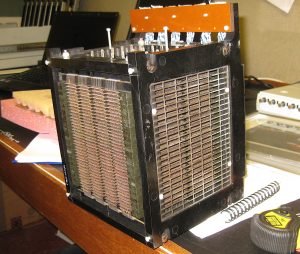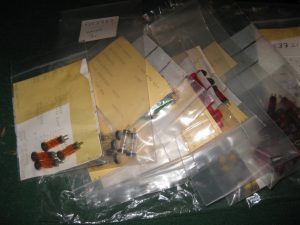It is as though the Fairy Godmother waved her wand some time around New Year’s Day: Claremont Tower (or as it’s now called: The Henry Daysh Building) was opened for academic activities in early January, and since mid-January students and staff have been milling around it (from the Ground upwards) as though the last 16 months had never happened.
Even last week, it was all rather strange: on the Ground Floor, University people were picking their way through hard-hatted workers; the Lobby was barriered off still; the floor was still concrete; the Basement was not finished by any means, full of contractors and muck, and Out of Bounds.
But today … today! … suddenly the Fairy Godmother’s spell was complete! In the Lobby, the floors are all carpeted; the furniture has all been delivered; students are sitting comfortably and amiably all over the place; and – suddenly – the Basement is equally complete!
And – sorry, USB and EBB dwellers – the HDB is wonderful! Comfortable, cosy, beautiful, perfectly appointed …
Below Basement Level it’s still all hard-hat, Out of Bounds – still a building site. (It’s not clear to me if McAlpine’s have stopped at the Basement, or if the lower levels will also be given a thorough going over — I don’t know. [It’s a bit like the mystery of the Bridge over Claremont Road: millions spent on the building, and on refacing the entire block … but the original, bare, 1965 concrete is still what spans the road itself, complete with streaks developed over 55 years — is that it, then?!])
A big “High”
For us “curators” (i.e. me), it was a really big “High” today, exploring some of the new building: there is a wonderful tranquil, comfortable feeling about it, as though the building itself is happy. It has never been so quiet in the building – even in the Sub-Basement – since September 2018! I feel that proper work can start again on the Collection, and that before too long others will be able to join in! Here’s a few amateur snaps for you:
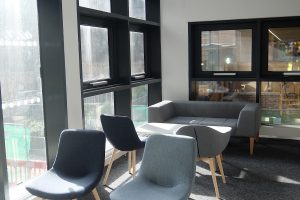
Turning round from the above, one of the very many “Encounter spaces”. If you looked through the window on the left (after it’s been cleaned), you would see the Fine Art Buiilding.
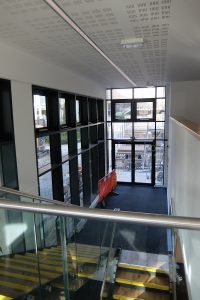
To the right of the “Encounter space” above, here is a staircase to the exit to “Claremont Quadrangle” – you can see the Old Library and Merz Court. But what is that other staircase leading down?
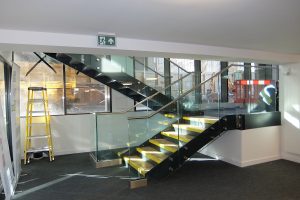
… it’s the New Basement! They have extended it beyond where the wall used to be. The old doors were probably about where the bottom step is. Maybe.
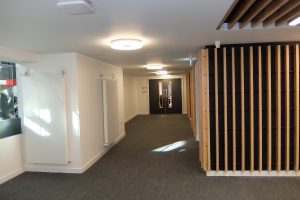
Look right from where the stairs are, and you can see where the Director’s office used to be: this (and about 3 offices to the right of it) have been turned into one large room. (They took out every single wall in the Basement, and have rebuilt it entirely.)
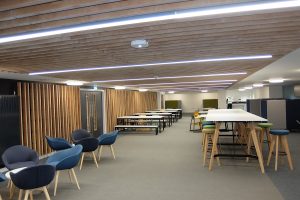
Look right again, and you are looking back down the length of what used to be the corridor and all those offices: again, one huge room. You can see a McAlpine’s man who is cleaning the kitchen at the far end.
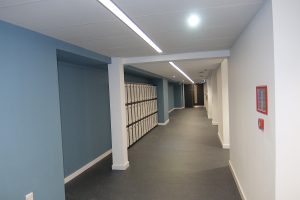
On the other side of the Basement are lockers, at least one shower, and women’s, men’s, gender-neutral and disabled toilets.
Meanwhile …
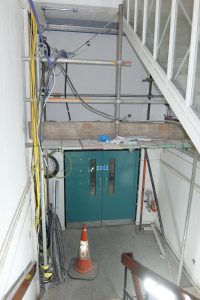
… in the Sub-Basement, evidence of lots of people still hard at work –– all the services (electrics, networks, heating, water) start and end down here. Nearly done!
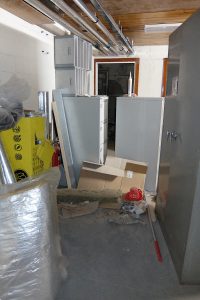
That’s the NUHCC Manuals Collection cupboard (I rescued the manuals themselves and put them in the locked storeroom!), and that’s our filing cabinets. That’s the old toilet, behind, now a heating centre for the Tower, full of gurgling noises .. which is very uncomfortable, if you’re nervous of floods.
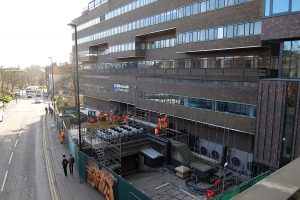
And now it’s the “real” Daysh Building’s turn (wonder what they’ll call it when it’s done?!]. Professor Daysh, by the way, was a prominent Geographer: see this now-dated link.

